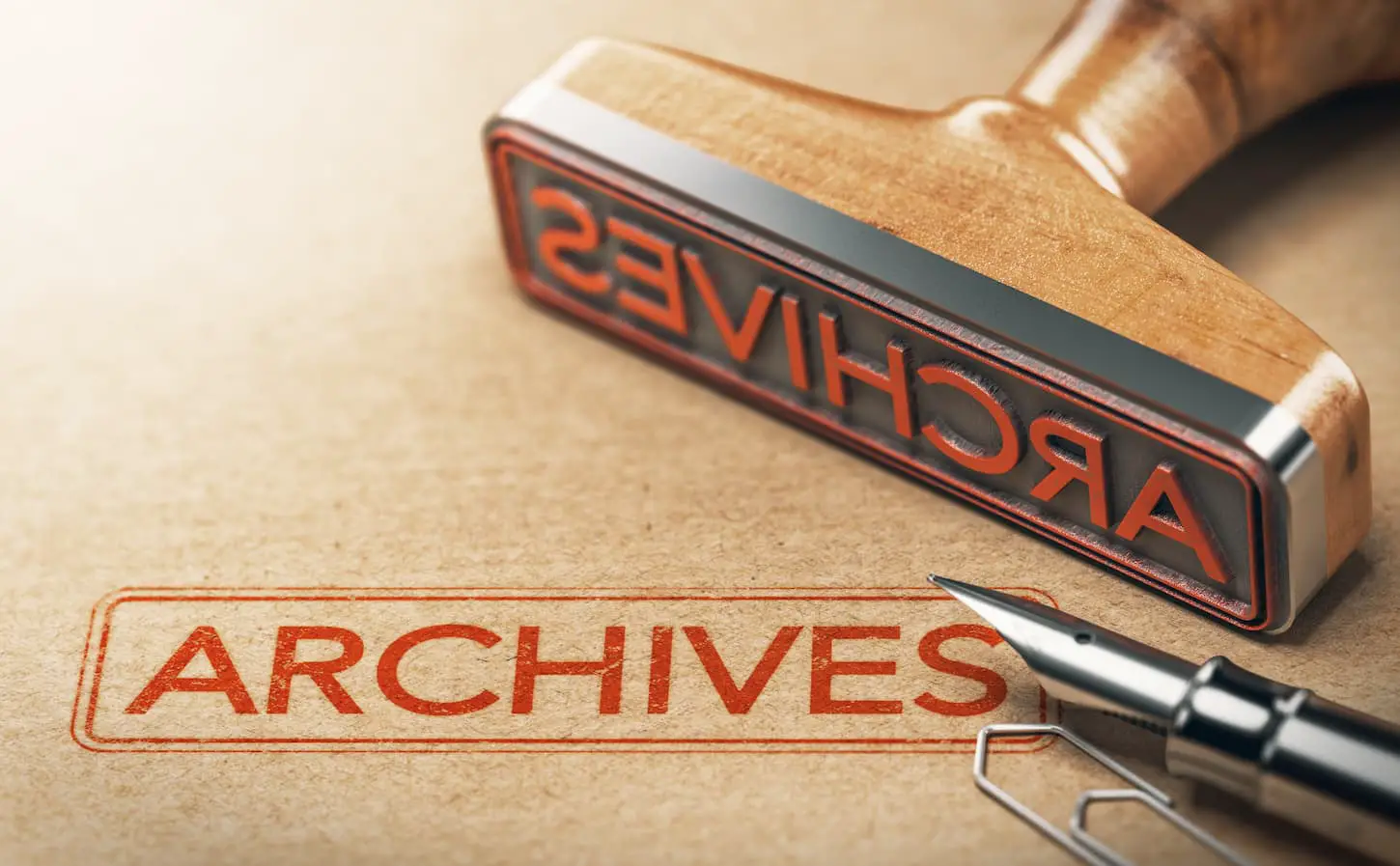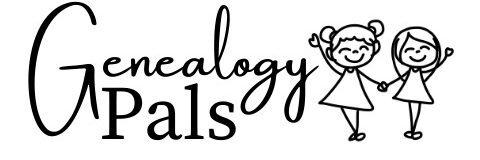As I’ve gotten more into genealogy and family history, one term keeps popping up: preservation. What is it – and how does it relate to genealogy? I messaged my genealogist pal and amazing friend Breanne – and she helped me look into it.
Preservation, of genealogical and family history materials, means actively protecting items from destruction, damage, or deterioration caused by time or environmental factors – so that items may be used or viewed by posterity in the future. Preservation is also called preventative conservation.
To learn more about preservation (including some basics you can do at home), keep reading!

The Best Definition of Genealogical Preservation
Preservation is, simply put, the protection of materials for the future. It’s future-proofing and saving anything and everything that’s important to you, your family, your family history, and your family story.
Breanne also explained it this way: it’s a way to remember our families, our ancestors, and where we’ve come from.
There are three deaths. The first is when the body ceases to function. The second is when the body is consigned to the grave. The third is that moment, sometime in the future, when your name is spoken for the last time.
David Eagleman: popular author, neuroscientist, and mind behind the TV series “The Brain”
This quote is one of the most profound ways to illustrate what we’re trying to accomplish with our preservation efforts; preservation is us not allowing our ancestors to suffer that third death – by remembering who they are and their life stories.
What Needs Preservation? (With an Example)
But what materials deserve to be preserved? Well, that can be anything (and everything) that tells a story worth keeping and retelling. And since most stories are worth knowing (as they teach us about where we come from and our family story), that can cover a lot of things!
After all, every person who has lived on earth leaves a story – that can be retold via a trail of objects, documents, and experiences they’ve left behind. These objects tell the story of their life. For example, we preserve our own stories by recording them and protecting those memories, stories, and objects so they can be passed down to our children (and hopefully they’ll pass them along to their children, and so on). Then they will know who we are and what our story is.
As family historians and genealogists, we gather the known stories and piece together the fragments of stories left by our ancestors. However, this is only possible if these documents, objects, keepsakes, and stories are properly preserved. That way, they’ll be available in the future, too.
Besides, having those objects is important for building a connection between the generations. Nothing helps build a feeling of connection with a person like touching something they have touched, seeing something they have written, or even hearing their voice.
So the short answer to what needs to be preserved is this: it is whatever you feel is relevant to helping future posterity understand more about the person in question. That doesn’t mean you should cherry-pick stories, though.
All information is relevant and important. Something you may not care about (or even want future generations to know) might be something that your descendants need to know. Your cautionary tale may end up being important to someone else. I’m a strong believer in truth and highlighting the good, but also in not hiding the bad.
Okay, so let’s get into the examples! Common things that need preserving:
- Memories – with time and recollection, memories fade and change. Preserve your own memories with some form of journaling. Preserve the memories of others by protecting their journals, interviewing them in some way (oral or written), and recording that interview.
- Paper products – like books, documents, photos, letters, and family bibles.
- Digital files – like photos, videos, music, or other recorded events.
- Recipes – like favorite family dishes or recipes that are passed down from ages ago.
- Heirlooms – heirlooms can be anything that you think would help posterity “get to know” that person or your relationship with them.
- Your genealogy – you’re not doing all of this just to be lost after you’re gone right?! Create and save your pedigree charts, family group records, and whatever else in various forms: digital, print, etc.
For example, I (Kimberly) wanted to get to know my Scottish heritage better. So I looked up a commonly-baked Scottish recipe and made it. Then, I preserved it by publishing it on my blog. And boy, am I glad I did! Because the person who originally posted that recipe took it down. So while the original is gone, I haven’t lost that piece of history. To see my Scottish meat pie recipe on my site, click here.
The Means of Preservation (or How to Preserve Genealogy)
Time changes everything, right? Everything on earth is subject to the effects of time – and the environment around us. By being intentional with how we use preservation, though, we can minimize the effects of air, water, chemicals, rust, disuse, neglect, and especially time.
What does preservation look like? It can be as simple as writing in your journal, organizing documents in acid-free sheet protectors, or digitizing records (and reformating digital files as technology changes).
When thinking about how to preserve your genealogy, it’s important to take into consideration a host of factors. Things to consider when properly preserving an item include how to protect the item from future use and exposure to things like:
- The current condition of the item – does it need any conservation or repair before preservation?
- Environmental conditions (like water, humidity, light, temperature, fire, or other natural disasters) can affect and degrade the items in question.
- The storage location – never store important items in an area that is prone to flooding or extremes in temperature, such as outside, in a basement or a garage, or next to a vent.
- The format in which the item is stored – is it an outdated format that can no longer be accessed easily?
- How the item is handled when in use–are documents being protected from the oils on your hands by wearing gloves?
- The duplication principle – the more copies of an original are out there in different places and formats, the better preserved it is.
What is the Difference Between Conservation and Preservation?
The term preservation is often used synonymously with the word conservation. However, conservation is different than preservation.
Preservation is protecting items from deterioration. Conservation is repairing items that are damaged or deteriorated so that they can be preserved for as long as possible.
Generally speaking, conservation (repair) is something that must be done professionally by someone who is an expert in that particular area. Here are a few quick examples.
| Object | Conservation | Preservation |
|---|---|---|
| Old journals | Repairing worn or damaged pages and bindings before storing them in a neutral environment to prevent future decay/loss | Making a digital copy and properly storing the original |
| Art | Stripping off time-related accumulations to show the underlying and original paints and/or enhancing the art by touching it up in person | Making a digital copy and restoring it in a program like PhotoShop |
| An object, like an old watch | Cleaning the old watch and repairing any interior mechanisms as much as possible with original parts | Taking photos, videos, and a 3D model – and creating duplicate copies that are backed up in multiple locations |
| Old Photographs | Restore the old image by cleaning it, touching up the color, and storing it in a neutral environment to prevent future loss/decay | Store it in acid-free sheet protectors and/or create digital copies saved to multiple backups |
To read more about conservation, read our article on it. You can navigate to it now by clicking here.
Frequently Asked Questions
Now, let’s make sure that you’ve got all of your preservation-related questions answered. Here are some of the most commonly-asked questions we’ve asked, researched, or been asked.
Oh, and if you don’t see your specific question (or answer), just shoot us an email. We’ll try to respond to as many emails as we can – and I’ll get your question added to this post. To find out how to email or contact us, click here.
We recommend using dedicated archival supplies, like these ones found on Amazon.
To see what all of the other resources, tools, and supplies we use, love, and recommend, please click here.
How do you preserve family documents?
The best way to preserve family documents is to first create digital versions of them. Then, store family documents in acid-free sheet protectors, binders, and storage bins. We recommend using dedicated archival supplies.
What is the best way to preserve old documents?
To preserve old documents, first safely create and store digital versions. Then, you may want to consider conservation efforts (if needed). Third, store the old documents in a neutral environment in archival-level preservation boxes.
How do you preserve family letters?
The best way to preserve family letters is to first create and store digital versions of the letters. Make sure you back them up to multiple locations. Then, store the originals in acid-free sheet protectors of an appropriate size.
How do I keep old birth certificates?
To keep old birth certificates, first create a digital copy. Be sure to store it on multiple backups. Then, store it in either an acid-free sheet protector and/or an archival record storage carton.
How do I keep old photographs?
The best way to preserve old photographs is to create and store digital versions of important photographs before then storing them in acid-free sheet protectors. Be sure to handle them with a proper archival document preservation kit.
